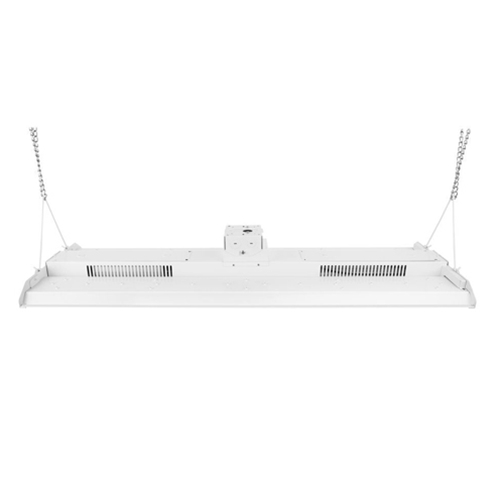DLC for Commercial LED Lighting
Released in two parts – V5.0 and V5.1, new technical requirements embody a phased approach to incorporating quality of light metrics into high-performing, energy efficient lighting.
Released today is the final version of new performance standards for high-performing solid-state commercial lighting, continuing a decade-long push to maximize efficacy and energy efficiency, while moving to capture and promote advances in quality of light. Implemented in a two-phased approach, the new policy aims to improve characteristics of light emitting diode (LED) products such as color performance, glare, light distribution, and controllability to maximize energy savings and user satisfaction.
“These new requirements ensure that we’re in step with advances in lighting technology, driving solutions for people and the environment by optimizing the benefits of quality of light and controls,” said Christina Halfpenny, Executive Director and CEO of the DLC, which provides tools and resources on energy efficient lighting for energy efficiency organizations and other stakeholders across North America. “Our phased approach incorporates the useful feedback we received from an array of stakeholders – ensuring that movement of the market in this important new direction is both expeditious and realistic.”
Based on lighting science and stakeholder input, the DLC’s V5.0 and V5.1 Solid-State Lighting (SSL) Technical Requirements put significant emphasis on the quality of commercial LED lighting – aspects of light that improve user satisfaction and comfort. The DLC released the policy on a conceptual level last year and followed up with a second draft on September 30, 2019. After considering over 1,000 stakeholder comments and meeting with DLC members, the DLC determined it was appropriate to release the policy versions at the same time, but with different effective dates.
Version 5.0 of the SSL Technical Requirements, the first of the two revisions announced today, aims to increase the efficacy requirements for listed products with the pace of technology, without compromising the quality of light. This follows past practice, as the DLC has boosted efficiency standards three times since publication of its initial QPL in 2009 – increasing required efficiency by 20 to 30 percent (depending on product type) in 2013, introducing a “Premium” designation worthy of higher utility incentives in 2015, and upping the efficiency ante again by 30 to 40 percent in 2016.
V5.0 also includes new dimming requirements for most indoor luminaires and retrofit kits, as well as for reporting on integrated controls for DLC Premium products – a change designed to increase energy savings by providing a gateway to controls utilization and improved user satisfaction.
The DLC will begin accepting manufacturers’ QPL applications under the V5.0 requirements on February 18, 2020. Products that do not meet the V5.0 requirements will remain on the QPL until the end of the transition period on December 31, 2020, after which they will be delisted. (See the V5.0 & V5.1 Manufacturer and Industry Guidance for detailed information.)
QPL applications under V5.1 of the SSL Technical Requirements will be accepted beginning July 1, 2020. This second phase of revisions will include all of the policy’s quality of light objectives. V5.1 establishes requirements and reporting standards for quality of light characteristics such as color performance, glare, and light distribution, as well as dimming requirements and reporting on integrated controls and control communication protocol for all DLC-listed products, including indoor lamps and exterior luminaires. Products that do not meet the V5.1 requirements will remain on the QPL until December 31, 2021, after which they will be delisted.
The DLC’s V5 requirements come amid recent technology advances and market shifts. As the LED market has matured over the past decade, a drive to reduce production costs in the face of mounting competition has tended to sideline the importance of product quality aspects such as glare control and color quality. The DLC’s new policy recognizes the end-user value of these quality of light aspects by supporting development and deployment of efficient lighting that also provides an array of non-energy benefits, including improving comfort and mood.
The new specification also points the LED market in a more controls-friendly direction. Since LEDs installed now may run for a decade or more, strengthening controllability requirements (such as dimming and integrated controls for daylight and occupancy) at the time of installation locks in potential energy and cost savings for years to come.
Along with the policy, the DLC today released Manufacturer and Industry Guidance for product submission and compliance with the new requirements, now posted on its website. The DLC will also provide program guidance materials for energy efficiency programs, with explanations of new metrics, benefits to customers, and timelines for transitioning to the new requirements.
Those wishing to learn more can register for a webinar hosted by the DLC on February 20
Ledfora Lighting DLC for Commercial LED Lighting:


